中国组织工程研究 ›› 2019, Vol. 23 ›› Issue (22): 3599-3603.doi: 10.3969/j.issn.2095-4344.1740
• 生物材料循证医学 evidence-based medicine of biomaterials • 上一篇 下一篇
气管切口处应用泡沫敷料的Meta分析
邱文波1,吴小婉1,韩 慧1,黄锐娜1,陈惠超2
- 1广州中医药大学护理学院,广东省广州市 510006;2广东省中医院大学城医院护理部,广东省广州市 510006
Application of foam dressing in tracheotomy: a meta-analysis
Qiu Wenbo1, Wu Xiaowan1, Han Hui1, Huang Ruina1, Chen Huichao2
- 1School of Nursing, Guangzhou University of Chinese Medicine, Guangzhou 510006, Guangdong Province, China; 2Department of Nursing, University City Hospital of Guangdong Provincial Hospital of Chines Medicine, Guangzhou 510006, Guangdong Province, China
摘要:
文章快速阅读:
.jpg)
文题释义:
泡沫敷料:泡沫敷料为3D发泡高分子材料,主要由聚氨酯和聚乙烯醇泡沫组成,外层为疏水材料,内层为亲水材料,其吸收功能较强,能够快速大量的吸收渗液、黏性分泌物及细胞碎片,使伤口处于湿性愈合环境,且吸收渗液后敷料向内膨出,密切贴合伤口,可减少渗液外溢和细菌入。
气管切口:是从气管第三、四软骨环前壁切开,将气管套管插入气管建立人工气道。行气管切开术后,一般置管时间较长且皮肤屏障的作用被破坏,易引起皮肤红肿、切口渗液、切口感染等并发症。
背景:大量研究证实,泡沫敷料能够降低气管切口处并发症的发生风险,减少换药次数,缩短愈合时间。
目的:Meta分析评价泡沫敷料应用于气管切开患者的治疗效果。
方法:应用计算机检索PubMed、EMBASE、Cochrane、中国学术期刊全文数据库、中国生物医学文献光盘数据库、万方数据平台和中文科技期刊数据库,有关泡沫敷料应用于气管切开患者的随机对照试验,检索时间均为建库至2018年5月。由2名研究生独立进行文献筛选、质量评价和资料提取,采用Revman5.3软件进行数据分析。
结果与结论:共纳入18篇随机对照试验,观察组患者气管切口处使用泡沫敷料,对照组患者气管切口处使用无菌纱布。Meta分析结果显示:观察组气管切口处并发症发生率低于对照组[OR=0.18,95%CI(0.11,0.27),Z=7.82,P < 0.000 01],气管切口处换药间隔时间长于对照组[OR=4.94,95%CI(3.70,6.18),Z=7.81,P < 0.000 01],气管切口处愈合时间短于对照组[OR=-1.39,95%CI(-1.64,-1.15),Z=11.30,P < 0.000 01]。结果表明,泡沫敷料应用于气管切开患者的治疗效果优于无菌纱布。
中图分类号:
R318.08
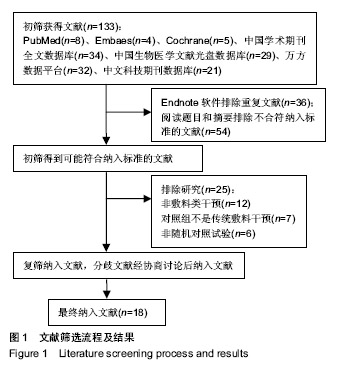
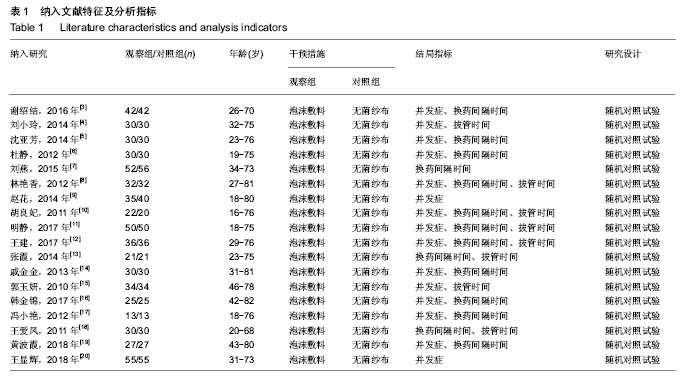
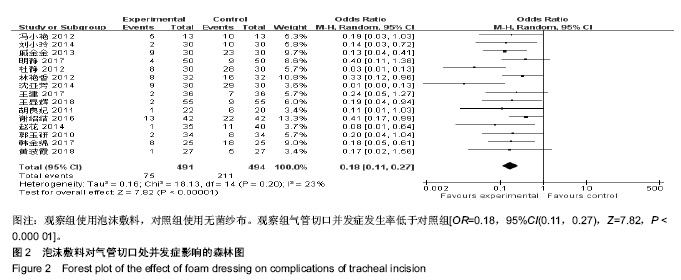
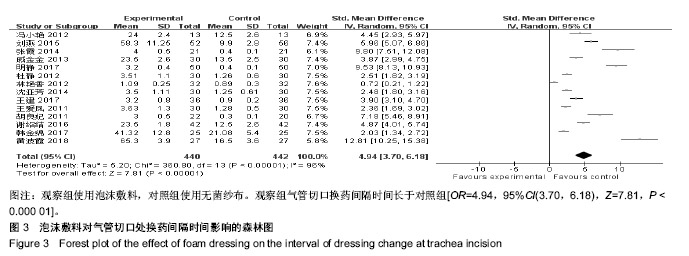

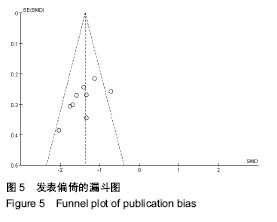
.jpg)